DeepSeek and Tencent Bundle: Explained
DeepSeek is accelerating China's AI scene on the ground the most radical integration in AI is not what Sam Altman thought.
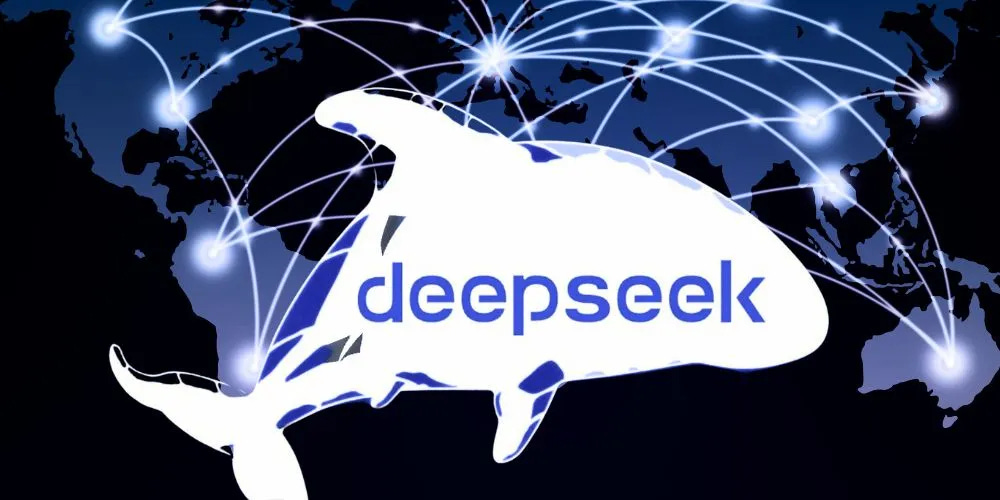
“Computing and new media depend upon flesh-and-bone metabolism. Our "virtual worlds" are made possible by battalions of human beings.” 1
Good Morning,
In today’s world that which integrates to the Cloud, goes open-source. In 2025 we are finding out that China’s application layer nativity might prove a super-power in Generative AI’s go-to-market’s (GTM) near term future.
When Afra Wang (王曌) wrote her debut ‘China in Flux’ essay recently on her new Newsletter about her latest travels in China, I was fairly mesmerized, but she’s been thinking a lot about history, China and digging into AI, and this means DeepSeek as well. She’s a budding sinologist, but a very global citizen.
🧮 Concurrent, explores the parallel and divergent tech/cultural currents flowing through China and the world.
She is known for her insightful pieces focusing on culture, technology, and the Chinese diaspora. But her writing cadence is very special to my ear and her research on this piece is very multi-layered.
Before we get into this next Deep Dive in our DeepSeek series, some China AI News to report on. Afra is by the way the host of the podcast "CyberPink," where she discusses topics related to the intersection of culture and technology in contemporary society.
Baidu’s Surprising new Models release (Sunday)
Chinese search engine Baidu has launched two new AI models — Ernie 4.5 and Ernie X1.
In the many 🐲 dragons and many 🐯 tigers war of 100 models in China, 🐼 Baidu claims that Ernie X1’s performance is “on par with DeepSeek R1 at only half the price,”, and it touts Ernie 4.5’s “high EQ,” allowing the model to understand memes and satire.
Baidu plans to release its next generation model, Ernie 5, later this year.
Baidu’s March 16, 2025 surprise announcement on Sunday were pretty vague and I’m fairly hesitant of them comparing themselves to either DeepSeek or Alibaba Qwen.
Other works by Afra:
China follows the West in AI Infrastructure Capex
Since DeepSeek-R1 was released, Tencent, ByteDance and Alibaba Qwen have released a flurry of models. A day before Nvidia’s GTC, Chinese tech giant Tencent has reportedly purchased a batch of new H20s AI chips, according to the Chinese media outlet Calian News. A report from GuruFocus highlights that Tencent and ByteDance are among NVIDIA’s largest clients in China, with both companies acquiring approximately 230,000 NVIDIA chips in 2024. This is quite a big capex by China’s own version of BigTech we are seeing.
As you might know, Alibaba is set to significantly enhance its AI and cloud computing capabilities through a major capital expenditure of over $52 billion by 2025.
Explore the parallel and divergent tech future-history of China’s impact.
Because who is better to help us understand the future, than a historian? From super-app envy to super-app ban? DeepSeek’s impact is getting tangible and contagious. I believe we have indeed witnessed China’s own ‘ChatGPT’ moment. Deconstructing it is easier said than done.
Audio tl;dr version:
DeepSeek and Tencent Bundle: Explained
By afra (Afra Wang, March, 2025).
As DeepSeek and Manus2 have seemingly emerged from nowhere to threaten Silicon Valley's carefully constructed moats, the most revealing development isn't in benchmark scores but in how these technologies are being integrated into existing ecosystems. OpenAI's formal proposal to ban DeepSeek—labeled as "state-subsidized" and "state-controlled"—reveals more about American anxieties than Chinese realities.
Two months after DeepSeek's global debut, the rapid integration between DeepSeek and Tencent offers a window into how the Chinese technological ecosystem actually operates: not through monolithic state control as OpenAI suggests, but through state-mediated acceleration that creates powerful connections between intelligence capabilities and distribution channels.
The orchestrated dance: DeepSeek, Tencent, and the state
Some online commentary suggests that Chinese internet giant Tencent has emerged as the most nimble responder—and potentially the greatest beneficiary—of DeepSeek's success.3
The lightning-fast integration of DeepSeek and Tencent exemplifies Chinese technological efficiency at its finest. This state-facilitated acceleration promises to create a powerful multiplier effect between AI capabilities and established digital platforms. However, the state's role here differs from Sam Altman's fear-mongering portrayal of "controlling" oversight. Rather than direct control, what we observe is strategic coordination and implicit endorsement—a distinctively Chinese approach to technological development that Western analyses often mischaracterize.
Last month, on February 18th, we know that DeepSeek founder Liang Wenfeng appeared on CCTV sitting beside Tencent's Ma Huateng at Xi Jinping's symposium for top business leaders. In China's political visual language, such seating arrangements carry potent significance—akin to state certification or even endorsement.
The timing was hardly coincidental. Just one day before this high-profile symposium, Tencent's WeChat announced its partnership with DeepSeek. What followed was a cascade of integration: Tencent Cloud announced that more than ten of its products would fully incorporate DeepSeek's LLMs, spanning development tools, enterprise services, and consumer applications. Simultaneously, WeChat began gray-testing DeepSeek-R1 within its search function, incorporating content from official accounts and supporting social sharing.
Several analyses have already illuminated the significance of this partnership for China's tech landscape. But the implications run deeper. Through this symposium appearance, DeepSeek secured its place on the AI throne in national-level forums, earning the tacit blessing of the state apparatus. This blessing, however, comes with implicit expectations rather than explicit directives—a subtle distinction that OpenAI's proposal to the U.S. government conspicuously fails to acknowledge.
This integration effectively transformed DeepSeek into a nationally endorsed product from both technical and strategic perspectives. Overnight, it gained entry into a digital ecosystem with 1.3 billion user base—becoming what Chinese people call a "national-level" app. WeChat’s scale and its super-app model once inspired Mark Zuckerberg and Elon Musk’s "WeChat envy."4 Now, most users don't access DeepSeek through its official app (which constantly crashes) but rather through Tencent's multi-agent platform Yuanbao.
While facilitating DeepSeek's integration, Tencent advances quietly on multiple fronts. Its recent Hunyuan video generation model has garnered international praise specifically for its practical strengths. As one user noted on Reddit: "I was genuinely impressed by its remarkable speed... Hunyuan's standout advantage lies in its robust community support."
This alliance illustrates the unique complexity of relationships between Chinese private enterprises and government—a dynamic that shifts between leveraging government power and maintaining calculated distance. Huawei offers an instructive parallel: as Eva Dou mentioned in a talk about her book House of Huawei, the company's "success stems from a hybrid model that combines strong state support with entrepreneurial drive." Yet historical evidence shows that early Huawei attempted to preserve independence, with founder Ren Zhengfei reportedly declining loan offers from China's then-Premier. Only after U.S. restrictions in the Trump administration did Huawei's relationship with the government grow increasingly close.
Under current geopolitical tensions, Chinese technology companies find themselves with precious little opportunity to shape their own narratives internationally. Facing intense scrutiny and persistent hostility, many are forced to identify as Chinese firms first, tech firms second. This external pressure has pushed entrepreneurs closer to the state out of necessity. Countries such as Australia, South Korea, and Italy banned the access to DeepSeek while it reveals some security vulnerabilities. As one tech consultancy told RestofWorld regarding TikTok's situation:
"If you are a Chinese company, you are often guilty before proven innocent."
As Ivy Yang noted, DeepSeek's explosive reception in the Western world has paradoxically robbed it of the chance to define itself. Founder Liang Wenfeng's studied reticence and media avoidance have created a gray space where observers project their own understanding. This narrative vacancy functions as a mirror reflecting American anxieties: tech hawks see unstoppable Chinese AI ascendance, tech pundits see it threatens free speech, while capital markets see DeepSeek dismantling OpenAI's moats.
But for someone like me—straddling Chinese and American tech landscapes with one foot in each world—the DeepSeek-Tencent integration reveals a distinctly Chinese technological cartography. Here, the state doesn't merely regulate technology; it orchestrates development, deployment, and adoption in ways Western observers often misinterpret as either ominously authoritarian or admirably efficient. Neither characterization captures the complex reality.
DeepSeek in a Deeply Pragmatic Society
Beyond these high-level relationships, what's happening with DeepSeek on the ground tells an equally fascinating story.
In a previous article DeepSeek and Destiny: A National Vibe Shift, I mentioned how DeepSeek's emergence created a sensation among many people, fostering a feeling that "the world order is rapidly changing, and China's moment of destiny is approaching"—partially self-consolation, partially infused with genuine optimism about China’s position in the world. However, delving deeper into China, you'll find that DeepSeek is hardly a topic dominating everyday conversations. The observations from the ground shows fervent discussions and obsession with AI coexist alongside complete unawareness of it. Both realities are valid, equally true.
During the Chinese New Year holiday when DeepSeek made its splash, I crisscrossed the country for nearly a month. My journey took me from ultra-first-tier cities like Beijing and Shanghai to Hangzhou where DeepSeek was born, then inland to the third and fourth-tier cities in Shanxi province. Along the way, I spoke with my cousin (teaching urban planning in Xi'an), a friend leading business development at a state-owned steel company, a high school classmate working in Beijing's energy sector, and family members scattered across the landscape. These ordinary young professionals and middle-class citizens—China's supposed technological vanguard—hardly mentioned DeepSeek. Game-changer? Not on their everyday radar. This is just my snapshot, of course—one American-educated Chinese person's social circle. But it hints at how far AI must still travel before weaving itself into the daily rhythms of Chinese life.
Most telling was my conversation with a friend at a state-owned steel company who dismissed AI with a wave of his hand. "Manufacturing—that's the real game," he insisted, his voice carrying what I would call "Chinese bronze age manufacturing masculinity"—a value system where tangible production still outranks digital innovation. His attitude more or less echoed the seating arrangement at Xi's symposium for tech and business leaders—that carefully choreographed tableau of power and priority so quintessentially Confucian in its hierarchical design. The chart spoke volumes: Huawei, BYD, Xiaomi—companies forging tangible things—commanded the prime positions. Electric vehicles, consumer gadgets, renewable energy, 5G networks—these are the industries China's leadership truly values. This preference is reflected in the "Made in China 2025" plan, which emphasizes manufacturing as the core of China’s strategic plan. Meanwhile on the same table, Tencent and DeepSeek could only occupy positions at the periphery of this seating chart.
To offer more of my on-the-ground observations, Chinese patterns of DeepSeek usage reveal a different relationship with AI than what I see among tech-savvy Americans. Rather than philosophical exploration or technical fascination, the grassroots Chinese approach is marked by utilitarian opportunism—a "catch the wind and profit" mindset focused on immediate practical applications. DeepSeek's most enthusiastic adopters are not just tech elites but ordinary people seeking quick income. This isn't merely pragmatism but entrepreneurial urgency—a recognition that AI represents a fleeting market opportunity to be seized. Content creation represents another DeepSeek stronghold. Scroll through Chinese social media and you'll encounter a flood of AI-generated material—the carefully constructed captions, the too-perfect product reviews, the suspiciously well-structured travel guides. Influencers have embraced DeepSeek's language processing to churn out scripts and posts at unprecedented speeds, leaving my timeline awash with content bearing strong synthetic flavors. Meanwhile, a parallel economy has emerged around "DeepSeek 101" tutorials teaching ordinary users how to transform simple prompts into cash flow.
On Xiaohongshu, people discuss how to use DeepSeek as a social intelligence amplifier, helping users navigate China's high-context, face-conscious society. Young professionals tap its capabilities to craft diplomatic work messages, perfect WeChat replies to their boss's cryptic messages, or formulate graceful rejections to unwanted social obligations. The platform has become an emotional intelligence coach for a generation facing relentless social pressure.
Perhaps most fascinating is DeepSeek's role as digital fortune teller. Users feed it birth dates and personal details, seeking insights about fate, compatibility, and future prospects—a technological revival of ancient divination practices. Caiwei Chen documented this phenomenon in a fascinating report on China's AI oracles.
The professional realm shows differences, too. While American developers publicly celebrate "vibe coding" with AI tools, their Chinese counterparts operate with more discretion and reservation. They prefer shadow arrangements—"DeepSeek+Cursor combinations" deployed quietly in the background. I recently read about China's "shadow AI" confirmed what I've long suspected: in China’s big tech companies, AI coding assistance has become an open secret. Unlike the American tech scene with its abundance of "super devs" doubling as influencers and thought leaders, China's programming culture fosters a heads-down approach. To be clear, China's tech professionals also celebrate AI's potential to automate coding and improve work efficiency, but the environment lacks vibrant discussions and debates around trendy concepts like "vibe coding," which is seen as a pivotal shift in the nature of work. For many Chinese coders, AI represents tools to help them meet intense corporate output pressures.
Municipal Government Adoption
Local governments across China have embraced DeepSeek with characteristic pragmatism—approaching AI as a tool rather than a revolution. The adoption pattern reveals a fascinating duality: on the one hand, genuine administrative efficiency; on the other, technological theater playing out across provinces. As municipalities compete to showcase their AI credentials, adoption metrics become badges of progressive governance in a distinctly Chinese blend of innovation and performance.
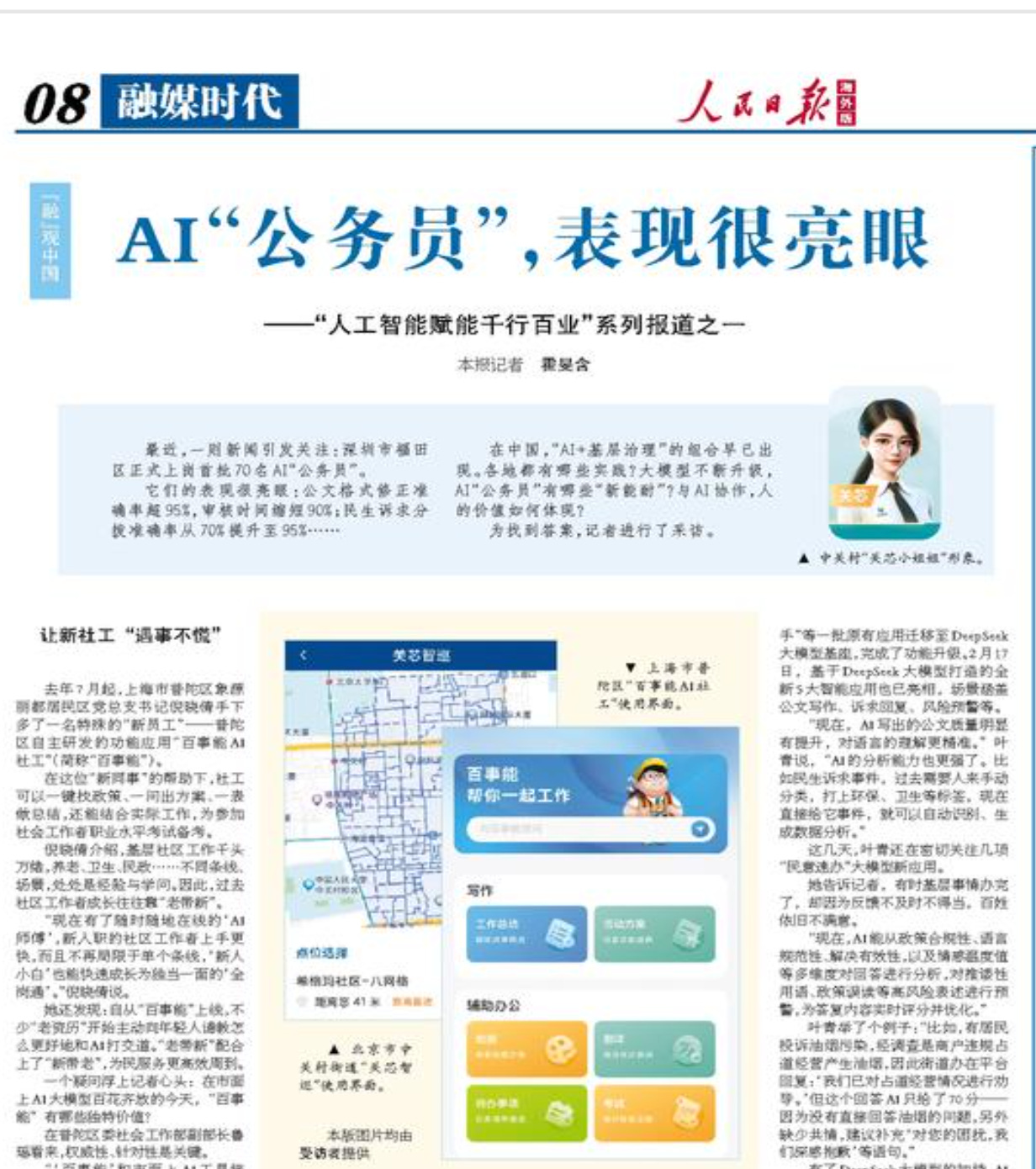
Shenzhen's Futian district exemplifies this approach, deploying 70 "AI civil servants" powered by DeepSeek to handle everything from document processing to emergency response and investment promotion. This model has triggered a cascade effect throughout the country. According to the report, in the Yangtze River Delta region alone, cities like Nanjing, Wuxi, Hangzhou, and Shanghai's Pudong district have all announced localized DeepSeek deployments, primarily focusing on document processing applications.
The landscape is now dotted with "AI virtual humans" and "digital government assistants"—some substantive, others resembling the showy joint ventures between tech companies and bureaucracies that have characterized previous innovation waves. What matters isn't always functionality but participation in the race itself. Hangzhou, as birthplace to both DeepSeek and robotics company Unitree, has emerged as the model other municipalities aspire to emulate, further accelerating resource allocation toward AI initiatives.
The contrast with American adoption is interesting: according to this Pew research, US state governments show dramatically varied approaches—some aggressively pursuing AI implementation while others proceed with elaborate caution and ethical frameworks. Approximately 8% remain in the earliest exploratory stages, still developing basic AI literacy within government ranks. This disparity doesn't simply reflect different technological capabilities but fundamentally divergent approaches to innovation governance.
While American discourse about AI often oscillates between utopian technological determinism and dystopian fears of job displacement, the Chinese approach I've observed is grounded—focused on utility rather than grand philosophical implications.
Conclusion
As AI technology splits along geopolitical lines, we need to actually understand what's happening on the ground, not just repeat the binary talk such as ”American democratic AI good and Chinese authoritarian AI bad.” The real danger isn't Chinese tech getting better—it's that misunderstandings like those in OpenAI's proposal might shut down chances for different approaches.
About the Guest contributor
Afra is a freelance writer and podcaster with working experience in AI and crypto. Personal site here. She just started a newsletter Concurrent, explores the parallel and divergent tech/cultural currents flowing through China and the world.
She has 70 readers this morning and the emerging writers around here keep lifting my eyes to the world that came before and to the speed of what the world is becoming.
It’s getting hard to keep up everyone! You know we’re witnessing history, right?
Your support makes it possible for me to discover authors like afra.
From afra’s list of quotes. via Tom Mullaney. Thomas Shawn Mullaney is an American sinologist. He is a Guggenheim fellow. He is professor of history at Stanford University, working on technology, race, and ethnicity in China. He is 47 years old and we admire him. Interview with daniel bashir of The Gradient.
He’s Professor of History and Professor of East Asian Languages and Cultures, by courtesy. He is also the Kluge Chair in Technology and Society at the Library of Congress, and a Guggenheim Fellow. He is the author or lead editor of 7 book. Get alerts if he shows up around here:
To extend this part: Tencent's aggressive speed is embedded in the company's DNA. In 2014, when mobile payments were just emerging in China, Jack Ma's Alibaba, built on the mature Taobao e-commerce platform, positioned Alipay as the undisputed forerunner. Yet during Chinese New Year, Tencent launched what Ma could only describe as a "Pearl Harbor attack." Similar to DeepSeek's understated product announcements, WeChat—without fanfare and despite its initially slow WeChat Pay adoption—introduced a "red envelope" feature allowing users to shake their smartphones for a chance to win digital red envelopes. The campaign proved phenomenally successful: over half a billion RMB worth of red envelopes changed hands, with 1.2 billion envelopes distributed. This promotion dramatically expanded WeChat Pay's user base from 30 million to 100 million users in just one month.
In 2019, Zuckerberg aimed to transform Facebook by following WeChat's super-app model, seeking to expand beyond social networking into integrated financial transactions and retail services. Similarly, Elon Musk later expressed his desire to turn X into a WeChat-like platform.




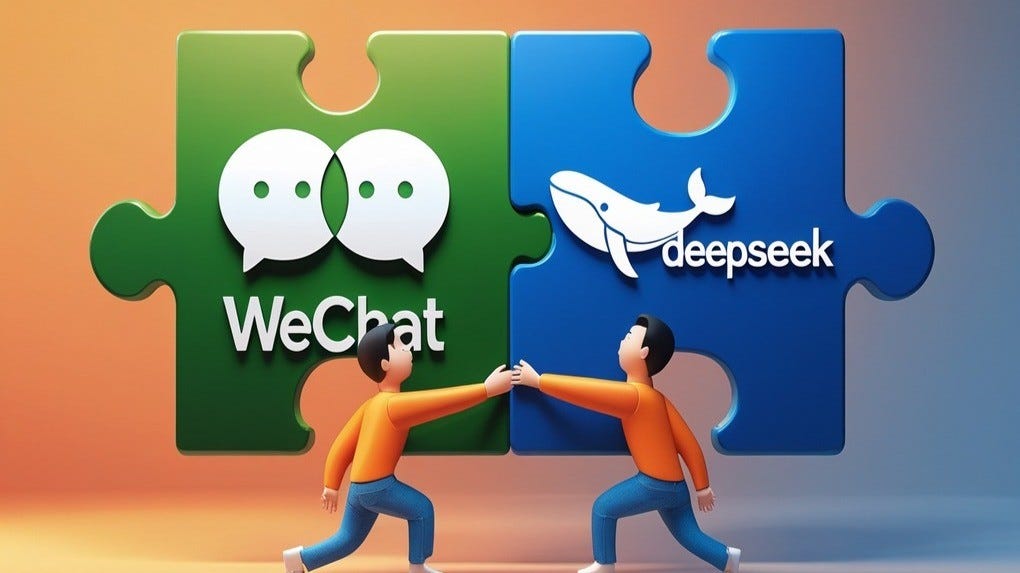

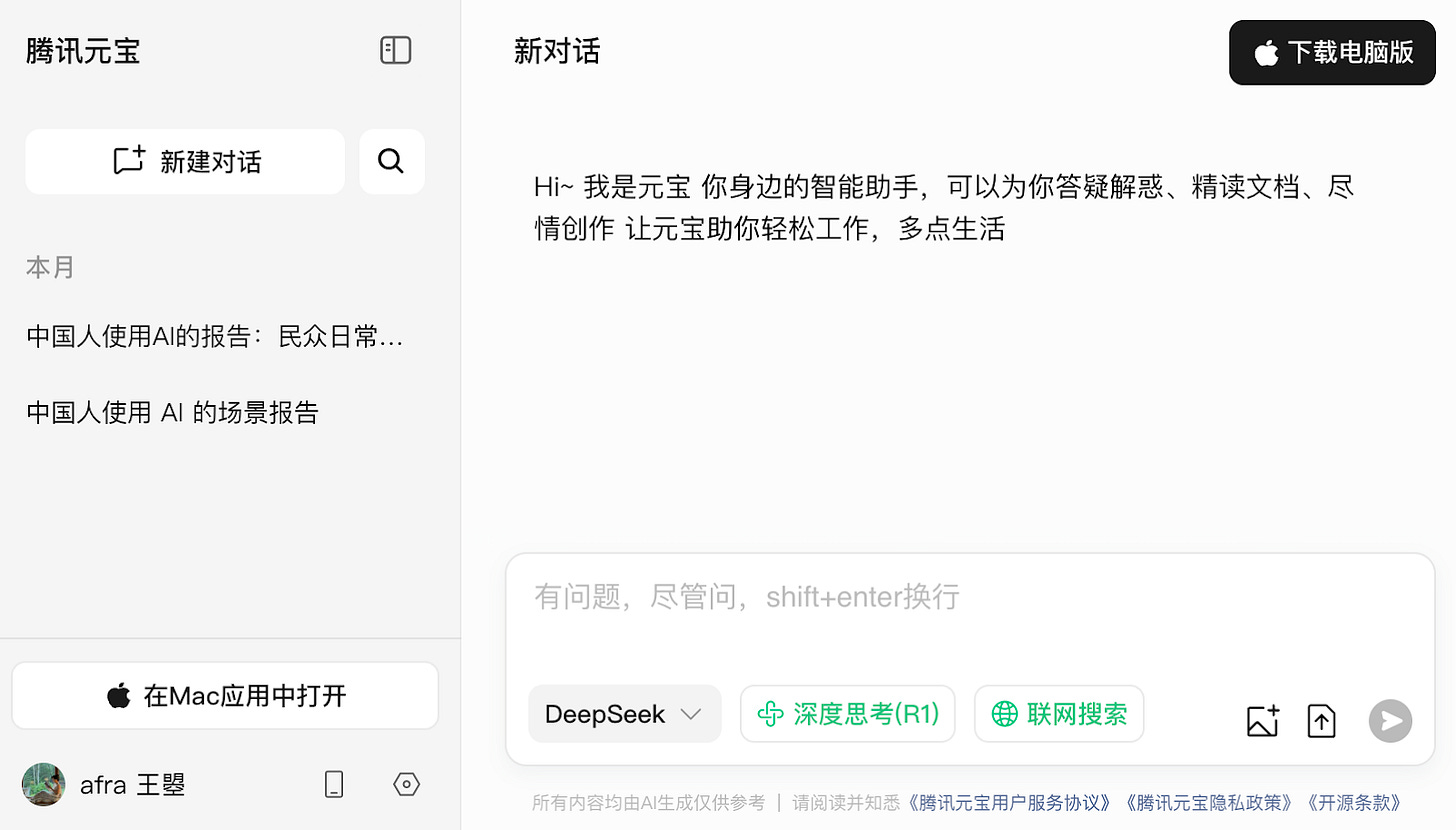
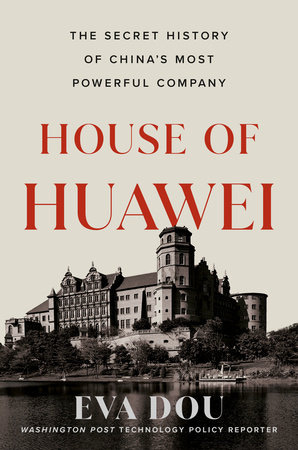


Afra, this was brilliant. The nuance here is rare and necessary—especially in a media climate that defaults to “us vs them” narratives. The idea that DeepSeek’s rise is less about state control and more about state-mediated acceleration feels like a key insight Western analysts continually miss.
The section on WeChat integration and municipal rollout was especially striking. The contrast between American philosophical AI debates and China’s utilitarian deployment (“emotional intelligence coaches,” “AI public servants”) really drives home the cultural divergence in adoption.
It’s also sobering to see how little DeepSeek is actually discussed on the ground, despite its geopolitical spotlight. That gap between elite narratives and everyday relevance is a powerful reminder of how different the tech world looks depending on where you stand.
Easily one of the most grounded and illuminating pieces I’ve read this year. Subscribed to Concurrent immediately.
Great read... here's a story I saw in Epoch yesterday enforcing need to look at US/China or China/US from higher plane...
https://www.theepochtimes.com/china/beijing-doesnt-know-what-to-do-with-its-private-sector-experts-say-5826096?utm_source=ref_share&utm_campaign=copy